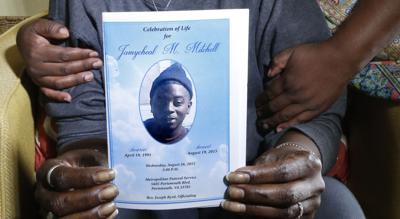
(8-11-20) I am sad to report that Norman Carlson, who served as director of the federal Bureau of Prisons (BOP) from 1970 to 1987, died Sunday at the Mayo Hospital in Phoenix, Arizona. Yesterday would have been his 87th birthday, his daughter, Cindy Gustafson, told me in an email. He died from aggressive lymphoma.
I first met and came to greatly admire Mr. Carlson in the mid-1980s while working as a reporter for The Washington Post and later when I spent time interviewing him for several days at his former home in Minnesota about his career for my bestselling book, The Hot House: Life Inside Leavenworth Prison.
He was regarded as one of the best federal managers in Washington and a leader in modern day corrections. He was also a remarkable man.
In a biography of Mr. Carlson, entitled A Model of Correctional Leadership: The Career of Norman A. Carlson, author Clemens Bartollas noted that he’d interviewed 80 individuals who knew Mr. Carlson well. The interviewees “in one way or the other, reported the same message – it was a honor to work for and with this individual: he was a remarkable human being, an amazing leader, and a great man,” Bartollas wrote.
Mr. Carlson looked exactly like what one would expect of a prison warden. Tall with broad shoulders, he had close cropped hair and no nonsense demeanor. But the harsh stereotypes that usually accompany that image belied a basic goodness in him. I remember during our first meeting when he explained to me that it was not the BOP’s job to punish inmates. Punishment was removal from society as ordered by a judge and courts. A correctional officer was responsible for keeping an inmate safe, locked up, and given what he/she was due.
Before Carlson took charge as director, the federal prison system was a series of fiefdoms each operated by an all powerful warden who tended to do whatever he wanted and much of that was not good. Much like McDonalds changed fast food by standardizing menus, quality and service, Carlson unified the bureau and introduced and enforced high standards of employee conduct and services.
As part of his drive for professionalism, he encouraged his employees to see themselves as “correctional officers” not guards. Prison assistant wardens were expected to wear suits and ties, and told to make themselves available by standing “mainline.” Each day during the noon meal, all a prison’s senior officials were required to stand in the dining hall while inmates ate. This provided inmates an opportunity to talk to staff members without being accused of being a snitch. In the old days, convicts always went in pairs to speak to a prison official. This enabled them to vouch for each other when they returned to the cell house, thus assuring other inmates that neither had snitched. Now because convicts could walk up to a prison official in the dining hall and talk in full sight of everyone, there was no need for a witness. If others suspected an inmate of snitching, they could walk up beside him and overhear what he was saying to staff. There was another more subtle reason for standing mainline. It was a reminder that despite the fact that the staff was vastly outnumbered and completely unarmed, they were in charge.
Shortly after being named director, Carlson disciplined officers who’d beaten an inmate, sending a clear message that he had zero tolerance for prisoner abuse.
Another managerial hallmark of his tenure was cleanliness and order. Mr. Carlson viewed a dirty prison as a sign of poor management, consequently floors were highly polished and walls kept painted. One legendary story described how a warden in the Northeast had his staff sprinkle flour on freshly fallen snow before the director’s visit because some of the snow had turned muddy and brown. The warden in Leavenworth, when I spent a year there, cleared everything – including his phone – off the top of his desk before leaving each night.
Mr. Carlson regularly visited prisons, often with his family, and insisted on eating with prisoners, to show that the food was good enough for his own family.







